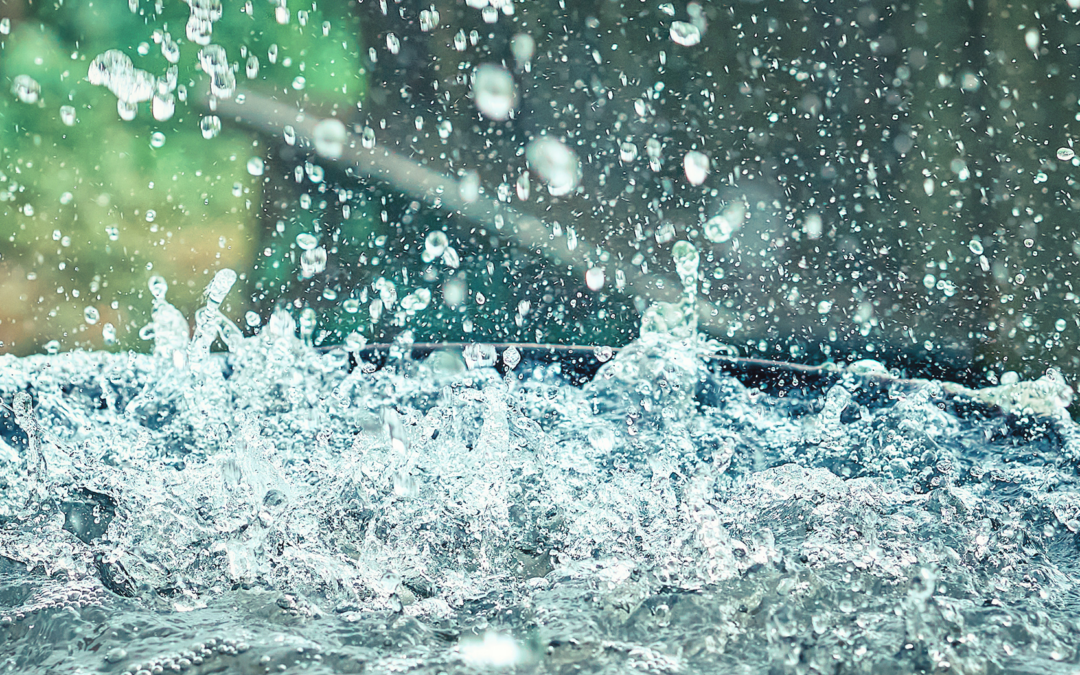Rainwater harvesting is a centuries-old practice that involves collecting and storing rainwater for various purposes. This sustainable technique has gained significant attention in recent years due to its numerous environmental and economic benefits. In this article, we will explore what rainwater harvesting is, how it can be implemented, and why it is an essential solution for the present and future.
What is rainwater harvesting?
Rainwater harvesting is the process of capturing, diverting, and storing rainwater for later use. It involves collecting rainwater from rooftops, surfaces, or natural catchment areas and channelling it into storage tanks, cisterns, or underground reservoirs. The collected rainwater can be utilised for various non-potable purposes such as irrigation, gardening, toilet flushing, and laundry, or with proper treatment, it can be used as a drinking water source.
Why harvest rainwater?
There are numerous compelling reasons why individuals and communities choose to collect rainwater and utilise it for various purposes. The practice of rainwater harvesting brings significant economic, social, and environmental benefits. Below, we will delve deeper into each reason to highlight the advantages of using rainwater.
Reducing Dependence on Mains Water: Implementing a rainwater harvesting system allows you to decrease your reliance on mains water. By utilising collected rainwater for some or all of your water requirements, you can effectively reduce your water bills and save money. Additionally, during periods of drought or water restrictions, having a rainwater supply ensures you are less affected and can maintain your water needs without depleting community water supplies.
Necessity: In rural or low population density areas where mains water is not available, rainwater harvesting becomes a necessity. It provides a vital water source for sustaining life and meeting various needs. Rainwater may also serve as a backup or supplement to other water supplies, such as boreholes or dams on your property. Having a stored reserve of rainwater is essential for emergencies and firefighting purposes, ensuring you have an accessible water source.
Saving Money or Qualifying for Rebates: Rainwater harvesting offers economic benefits. It helps you save money on water bills by reducing your reliance on treated water. Additionally, in some regions, local councils provide cash-back rebate plans for installing rainwater tanks on properties. This further incentivises the use of rainwater harvesting systems and contributes to cost savings.
Lowering Ecological Footprint: Rainwater harvesting and the subsequent use of rainwater on your property contribute to environmental benefits. By collecting rainwater that would otherwise become stormwater runoff, you minimise the impact on local water habitats, preventing potential damage to creeks and other ecosystems. Moreover, using rainwater for your garden helps sustainably nourish your plants, aligning with natural watering practices.
Health & Personal Preference: Some individuals opt for rainwater due to health concerns or personal preferences. Rainwater is often preferred for drinking purposes as it lacks the chemicals typically used in treating mains water. It provides a fresh and natural alternative. Moreover, individuals residing in areas with salty, hard, or unpleasant-tasting mains water may find rainwater more appealing for their water needs.
Improved Drought Resilience: Storing rainwater on your property significantly enhances your resilience during periods of drought. As climate change leads to higher temperatures and more frequent droughts, having a readily available supply of water becomes crucial. Rainwater reserves can be rationed or used for emergency purposes, ensuring you have a reliable water source during challenging times.
Increased Self-Sufficiency: Collecting rainwater grants you greater control over your water usage and acquisition. It enhances your financial decision-making by reducing dependence on external water sources. In emergencies, having stored rainwater ensures you remain self-sufficient and less reliant on other water supply methods, promoting a sense of autonomy and preparedness.
Improved Bushfire Preparedness: Given the increasing likelihood of bushfire events, stored rainwater becomes invaluable for protecting your property. Rainwater can be used to backfill gutters, distribute water across your property, wet down roofs, and extinguish stray embers. Having readily available rainwater during bushfire seasons enhances your preparedness and firefighting capabilities.
How to harvest rainwater?
Depending on your specific requirements, there are various methods at your disposal for harvesting rainwater. Our team has developed a comprehensive 12-step guide to help you build the perfect rain harvesting system tailored to your needs. Whether you aim to collect rainwater for your garden using a rain barrel or need a more complex setup to harvest water for drinking purposes, the 12 steps provide clear instructions on how to achieve an efficient rainwater harvesting system.
To begin, familiarise yourself with the 12 steps and gain a deeper understanding of each stage involved in the process. These steps cover essential aspects such as calculating your water needs, assessing the available rainfall, selecting appropriate collection surfaces, determining storage capacity, filtering leaves and debris, diverting the first flush of rainwater, and managing standing water. By following these steps, you can ensure that your rainwater harvesting system is designed and implemented effectively.
Learn more about the 12 Steps of Rain Harvesting here.
If you prefer a hassle-free approach, our team is ready to assist you in creating your ideal rain harvesting system. With our expertise and experience, we can tailor a solution that meets your specific requirements. Feel free to visit our Designed by Rain Harvesting page to request your free Rain Harvesting system design.
Rainwater harvesting is a sustainable and practical solution to address water scarcity and promote environmental stewardship. By implementing simple techniques like rooftop collection or surface runoff management, individuals and communities can contribute to water conservation efforts, reduce costs, and mitigate the impact of water-related challenges. Embracing rainwater harvesting is a step towards a more resilient and water-secure future for both present and future generations.

